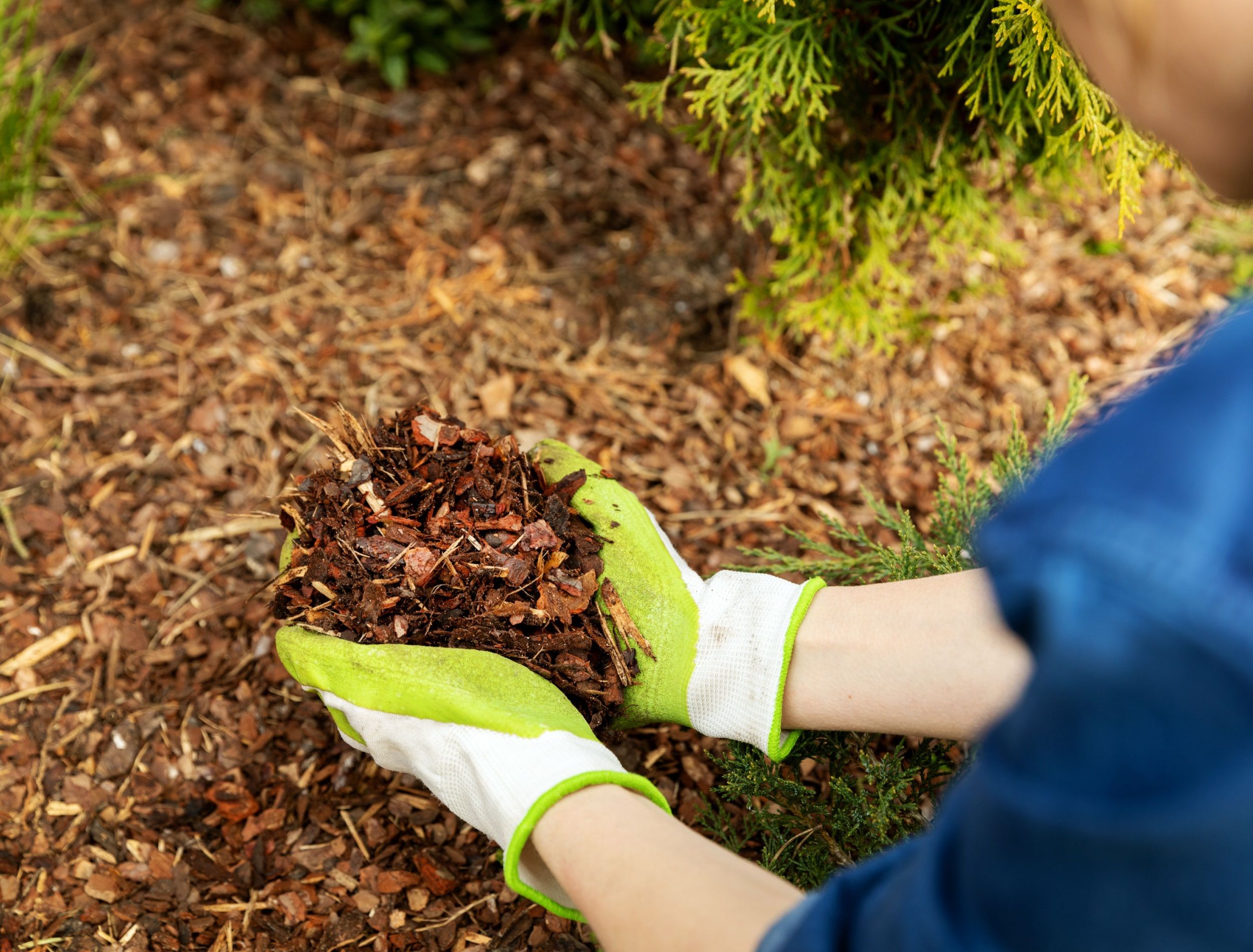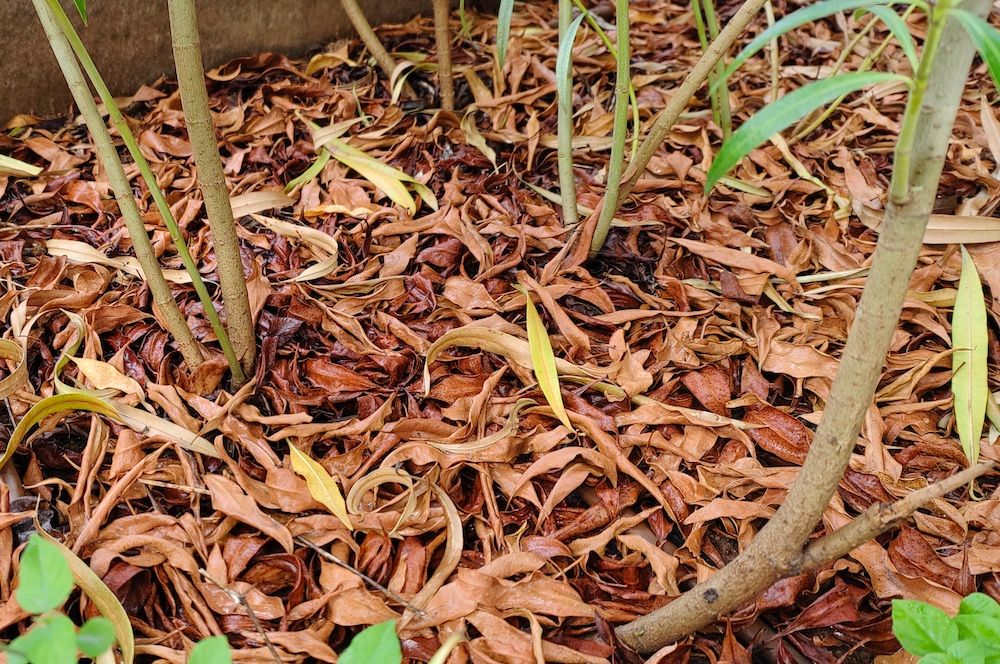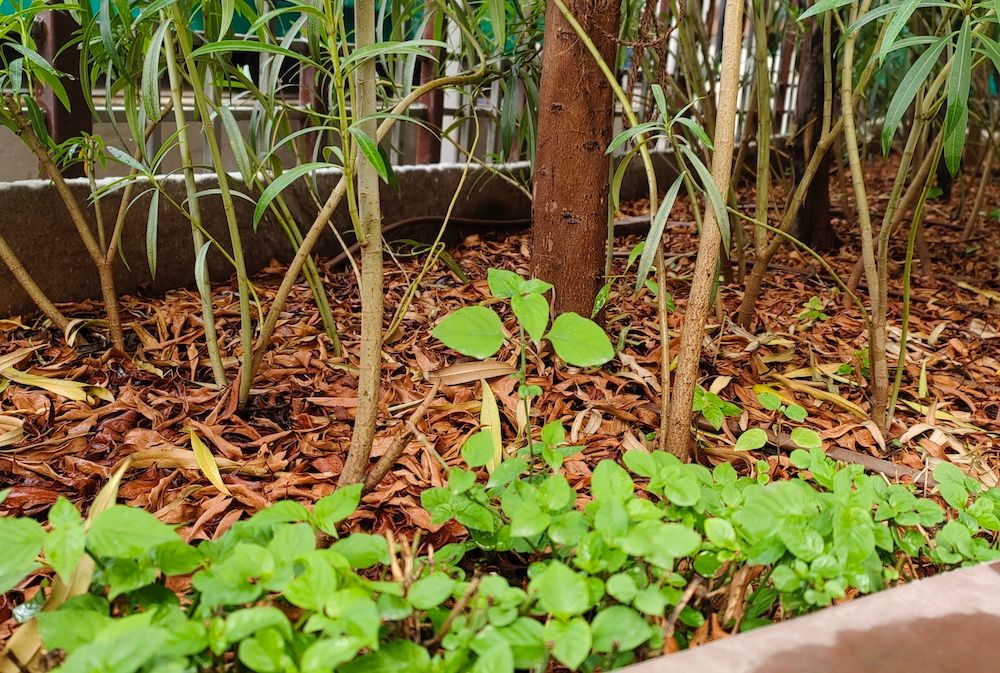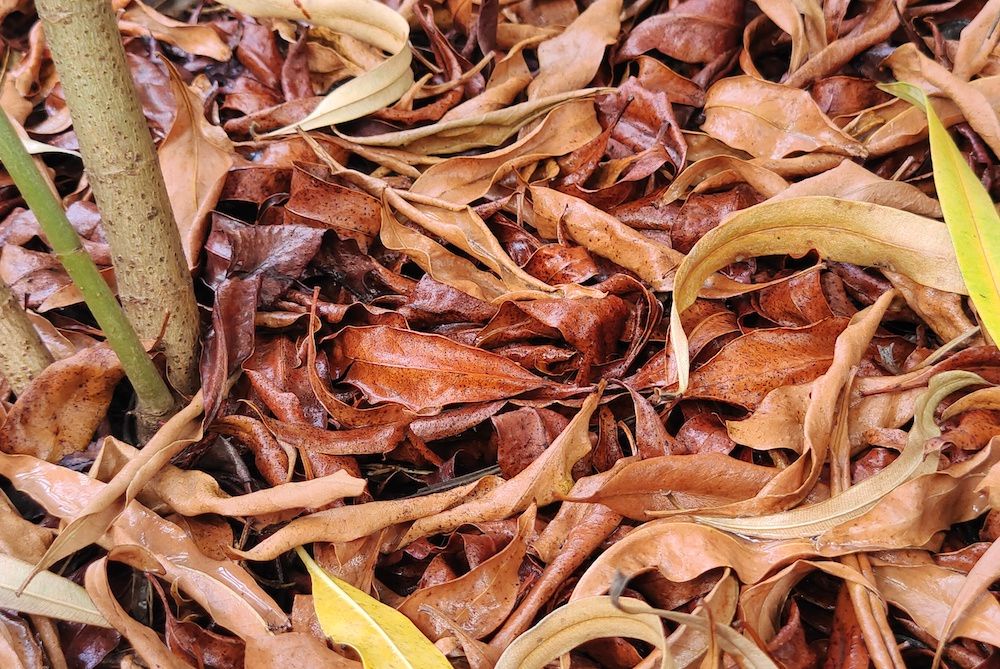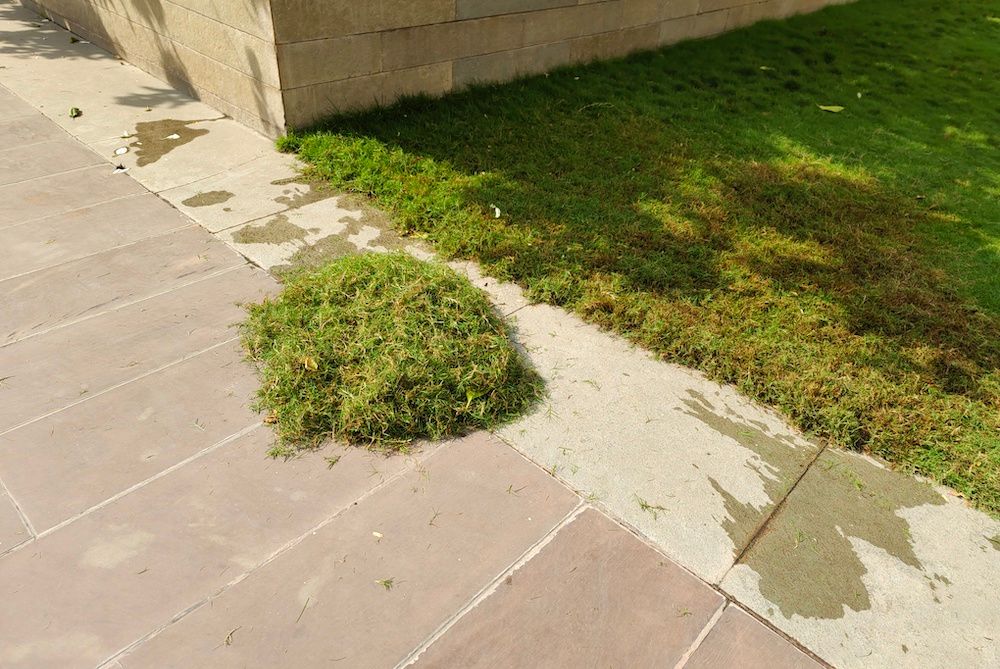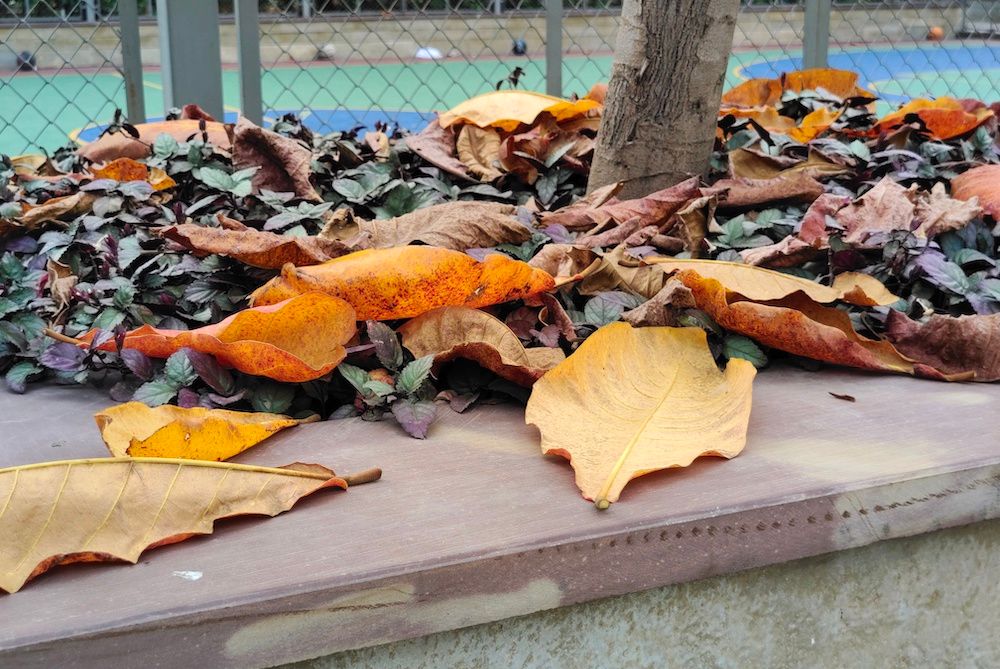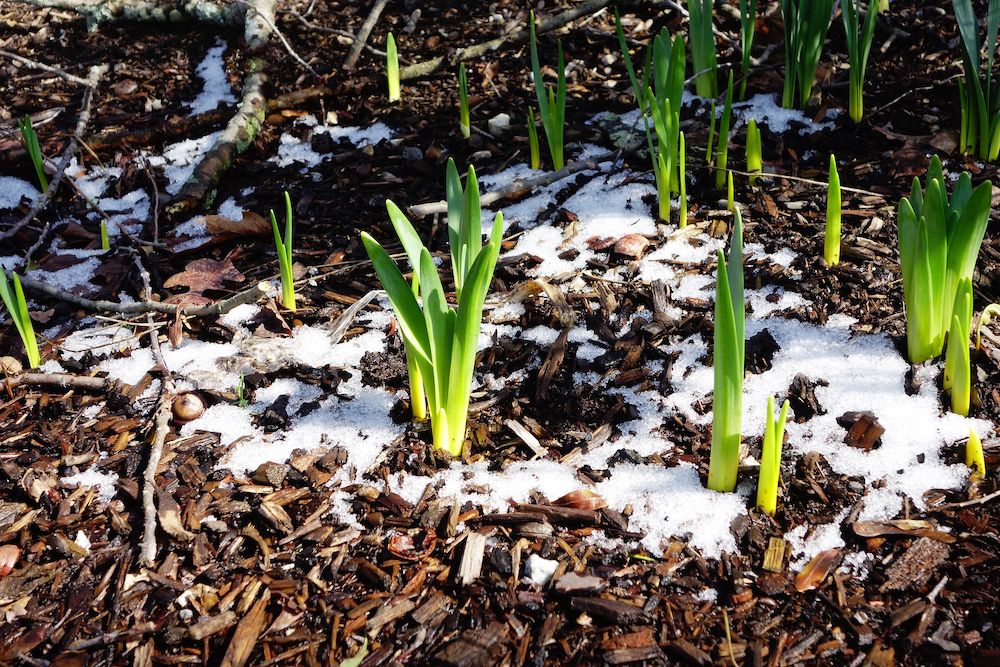Mulch plays a significant role in maintaining healthy plants while beautifying your garden. That said, the best time to mulch your flower beds depends on several factors, including the climate, the type of mulch, and the type of flowers you are growing.
Mulching can help you suppress weeds, retain soil moisture, prevent nutrient leeching, and regulate the soil's temperature so your dormant plants can spring back to action! Mulch more below!
What Is Mulching?
Image credit: Lakeisha Ethans for Backyard Boss
Mulching is covering the soil with organic (or inorganic) materials. Organic materials include fallen leaves, bark, and straw, whereas inorganic materials include crushed gravel, plastics, and rubber.
Organic mulches will decompose and gradually release nutrients into the soil, which will help improve soil structure and fertility. Inorganic mulches, on the other hand, won't decompose or release any nutrients into the soil, but they will suppress weeds, help the soil retain moisture, and look decorative.
How To Mulch
There are three ways to mulch your flower beds. The first is a fresh application, the second is a replacement, and the third is a top-up.
A fresh application means your flower beds have either never been mulched or two to three years have passed from the last time it was mulched.
A replacement is when you let organic mulches decompose and replace them with other organic or inorganic mulches and vice versa. For example, if you used straw last season, you can replace it with pine needles (another organic mulch) or with rubber (inorganic mulch).
However, if you used inorganic mulches like rubber or gravel last season, you'll need to remove them completely using a rake or a shovel before replacing them with organic mulches. This is because inorganic mulches will interfere with organic mulch's ability to release nutrients into the soil as it decomposes.
Next, a top-up is when you use the same organic or inorganic mulches to increase the quantity -- for example, you top up pine needles with a new layer of pine needles, or gravel with a new layer of gravel.
Unsurprisingly, you'll need to replace or top up organic mulch after it fully decomposes. For example, you'll need to replace or top up straw, newspaper, and grass clippings every season, whereas bark, tree trimmings, and pine needles can be dealt with every two years.
However, you won't need to worry about replacing inorganic mulch frequently unless you use it in high-foot-traffic areas.
Importance of Mulching Your Flower Beds
Image Credit: Lakeisha Ethans for Backyard Boss
Your flower bed soil is constantly exposed to the elements like strong winds, heavy rain, cold snow, and dry summer days. Mulch acts as a protective layer to prevent these elements from harming your soil structure and fertility.
Mulch is like an insulation blanket that regulates soil temperature and retains moisture that, in turn, reduces the need for constant irrigation, thereby saving water. In short, during hot summer months, mulch keeps the soil cool, whereas, in cold months, it keeps it warm.
Apart from boosting plant growth, organic mulch is an earthworm's best friend! Besides earthworms, organic mulch helps other beneficial bacteria and microorganisms stay warm to improve soil structure and fertility. Therefore, mulching can:
- Protect bare soil
- Prevent soil erosion
- Improve soil quality
- Stimulate plant growth
- Keep the soil moist
- Regulate soil temperature
- Increase crop yield
- Reduce the growth of weeds
- Protect plant roots from frost in winter
When Should You Mulch Your Flower Beds?
You can top up your flower beds year-round, but when it comes to applying mulch, there are a few things to consider. You can top up mulch in your flower beds year round, but when it comes to a new application, mid to late spring is ideal, especially when the ground is no longer frozen.
1. Mulching in Spring
Image Credit: Lakeisha Ethans for Backyard Boss
If you want to mulch your flower beds in spring, wait until the ground is not frozen. After the ground is snow-free and the temperatures are warm (usually by mid-spring), you can start mulching your flower beds. You can prepare your garden for spring by adding mulch to suppress weeds and improve your soil structure.
Add 3 to 4 inches of organic mulch to established plants, trees, and shrubs. When it comes to seedlings and plants grown from transplants, start by spreading a layer of 1-inch mulch, gradually reaching 3 to 4 inches in a span of three weeks.
When mulching, ensure it doesn't touch the plant's stem, as that could set rot.
2. Mulching in Summer
Image Credit: Lakeisha Ethans for Backyard Boss
Mulching your flower beds in summer helps the soil retain moisture and prevents it from drying out due to evaporation. Mulching can reduce water evaporation in the soil by up to 70 percent!
Besides retaining moisture, mulching can suppress weeds and moderate the soil's temperature to prevent it from heating up and baking your plants. During summer, mulching keeps the ground cooler in the morning and warmer at night.
That said, use organic mulches for your flower beds in summer because inorganic or synthetic ones can trap more heat, which can increase the soil's temperature by 1 to 2 degrees. If you use clear plastic mulch, your soil's temperatures may increase by 10 degrees; if you use black plastic mulch, your soil's temperature will increase by about 5 degrees.
When it comes to how much to apply, it'll depend on the type of mulch you're using. A 3-inch layer is sufficient for compost, bark, or peat moss. If you're using straw or hay, spread a 4 to 5-inch layer on your flower bed.
3. Mulching in Fall
Image Credit: Lakeisha Ethans for Backyard Boss
You can mulch the flower beds in the fall to help the soil retain heat and moisture better and to suppress weed growth. This helps the plants grow stronger to withstand the freezing and thawing that comes with winter.
The mulch you apply in fall is also known as "winter mulch," as it serves as insulation for plants during winter. When it comes to application, apply it after the soil has cooled but before the ground has frozen.
Straw makes excellent winter mulch. If you choose to use straw, spread about 6 to 8 inches of the straw on your flower beds to protect your plants' roots and keep your soil warm.
4. Mulching in Winter
Image credits: Ray Bernoff via Shutterstock
Even in winter, you can mulch your flower bed, but it's best to do it after the ground is frozen. If you used organic mulch in the fall, check to see how much remains on your flower beds. You can add 2 to 3 inches of mulch to top up the existing mulch. Topping up mulch in winter helps reduce the stress plants go through during the freezing and thawing cycles.
Mulch to Do!
Mulching plays a critical role in maintaining the health and beauty of your garden. It can save time and effort by reducing the need for watering and weeding while also improving soil health and enhancing the overall appearance of your outdoor space. It's always a good idea to use organic mulch in your flower beds to help improve soil fertility and structure when they decompose.
Leave your experiences, thoughts, and questions in the comment section! And share with friends and family who might find this helpful.

